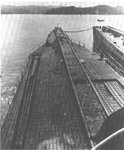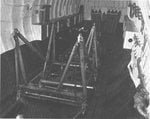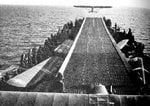Velius
Airman 1st Class
Hey everybody!
I became interested in aircraft carriers recently. It amazes me how these floating cities can launch aircraft from virtually anywhere. But I came across something recently that REALLY surprised me. Apparently, flying aircraft carriers and submarine aircraft carriers have been made, both of them before the end of WWII . For the flying aircraft carrier I found an airship called the USS Macon. For the submarine aircraft carrier, I found the Japanese I-400 class submarine. I tried to find more information about these two but I'm not finding much. Does anyone know any good sites or links about these? Were other similar vessels ever made? What does anyone know about these? Any help and info is appreciated. Thanks!
. For the flying aircraft carrier I found an airship called the USS Macon. For the submarine aircraft carrier, I found the Japanese I-400 class submarine. I tried to find more information about these two but I'm not finding much. Does anyone know any good sites or links about these? Were other similar vessels ever made? What does anyone know about these? Any help and info is appreciated. Thanks!
I became interested in aircraft carriers recently. It amazes me how these floating cities can launch aircraft from virtually anywhere. But I came across something recently that REALLY surprised me. Apparently, flying aircraft carriers and submarine aircraft carriers have been made, both of them before the end of WWII








